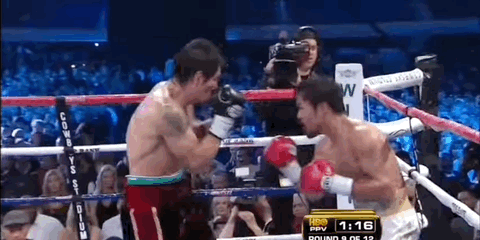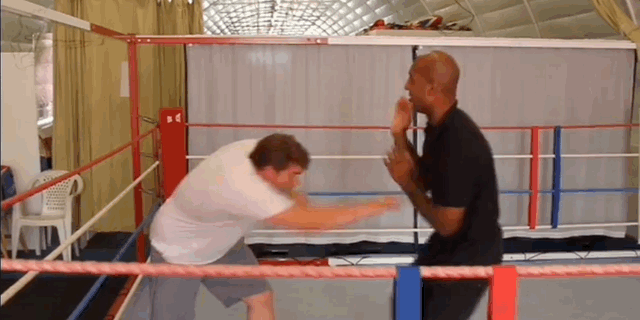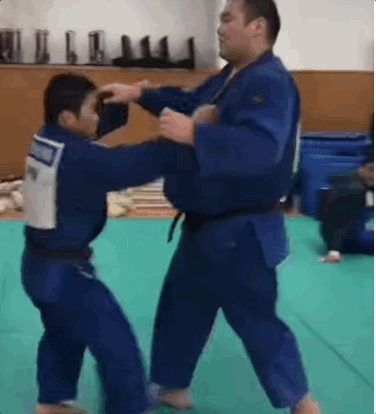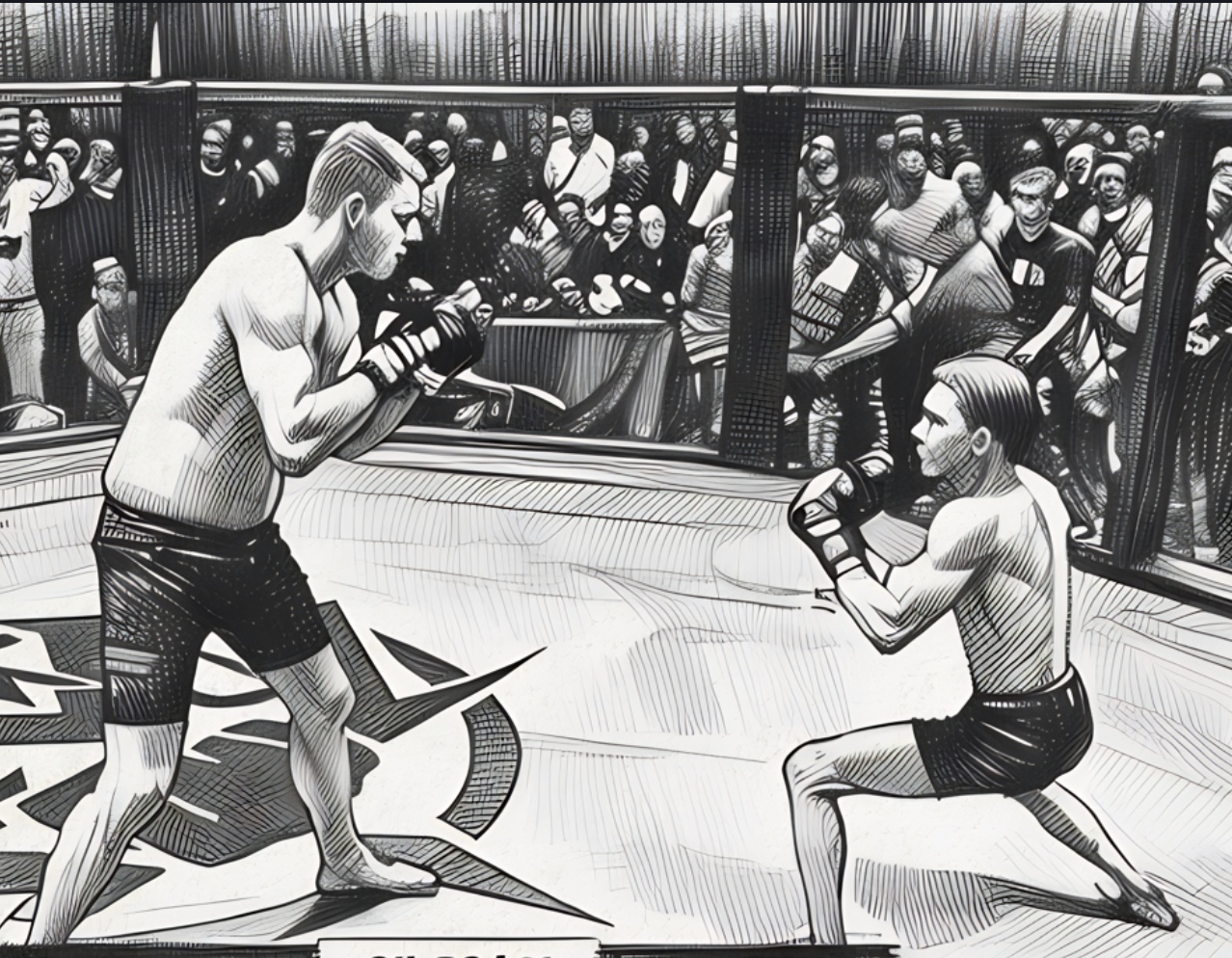Size and strength aren’t everything in a fight, mind it. All that works is the right technique to use at the right time.
If you are smaller than your opponent, you can still defend yourself effectively without thinking, “I am just outmatched.” What you just need to learn is how to turn your small size into an asset.
Practical self-defense techniques don’t solely rely on brute strength. You must explore everything from striking and grappling to mindset and awareness. You should know how to utilize your lower center of gravity for stability and takedowns against larger opponents.
Focus on strategic approaches and precision strikes to level the playing field or make the odds in your favor.
Understand the Edge You Have Being a Smaller Fighter
A bigger attacker certainly has more reach and probably more mass to throw around. But being smaller doesn’t automatically mean you are at a disadvantage.
In fact, it can actually give you certain benefits if you know how to use them.
- Shorter fighters can utilize their natural speed and agility to make it harder for larger attackers to target them. Their rapid movements allow them to move quickly in and out of the opponents’ range to dodge attacks and evade.
- Smaller individuals naturally have a lower center of gravity, which helps them balance and execute throws during self-defense. It also makes it easier for shorter heights to get under the opponents’ COG and use their momentum to destabilize them.
- To strike effectively, bigger fighters must have to reach lower, which slows down their punches. This may give you time to react and create openings.
- The main and might be ending strike when defending yourself. Smaller fighters can target vulnerable areas like the eyes, groin, or throat that incapacitate the other in minutes.
Bigger professional fighters may have strength, but you can strategically surprise them using your natural abilities in self-defense.
Specific Martial Arts Suited for Smaller Individuals to Learn Self-Defense
If you are up to specializing in combat sports for the sake of learning defense, certain martial arts are particularly effective for smaller individuals. They emphasize technique and leverage over brute strength.
Muay Thai — Precision Striking and Strong Defensive Positioning

Best for: Striking, clinch fighting, and close-range combat.
Muay Thai is a comprehensive martial art that utilizes the entire body as a weapon. It teaches practitioners to generate significant power when fighting in close quarters using elbows and knees.
Muay Thai is renowned for its clinch, which is the striking area just before going into throwing range. It is a fast and powerful style that maximizes the effect to control bigger opponents up close, making it highly adaptable for smaller fighters.
Boxing — Stay Mobile and Strike Effectively

Best for: Speed, footwork, and punching.
Your small height gives you an edge in quick movements, and fighting with personalized boxing equipment further enhances grip and strike. It teaches you how to evade attacks and use footwork to stay out of reach.
For instance, using lateral movement to circle around the taller opponent making it harder for him to target you. It can help close the distance and create angles for attacks.
Boxing is also perfect for learning head movements like bobbing and weaving. This makes you a more elusive target in defending yourself.
Wing Chun — Quick Counterattacks and Neutralizing Heighted Attackers

Best for: Close-range combat, speed, and redirection.
Wing Chun practitioners use trapping techniques to control the opponent’s limbs. They can also incorporate attacking and defending simultaneously to mount a counterattack. Wing Chun helps a smaller fighter negate the reach advantage of a taller adversary. It utilizes a centerline theory and emphasizes deflecting force rather than meeting it head-on.
The most important focus on direct and efficient movements in Wing Chun is to generate power and control. This smart mechanical leverage allows someone physically smaller or weaker to overcome a larger and more formidable opponent.
Judo — Relies on Leverage and Techniques

Best for: Throws, takedowns, and using an opponent’s weight against them.
Judo proves that size isn’t everything in a fight. It focuses on maximizing efficiency with minimal effort, which means that skill can overcome the strength and height benefits opponents may be confident in.
Smaller individuals can use techniques that exploit weak points in balance to throw adversaries. Variations like Seoi Nage (shoulder throw), Kouchi Gari (Minor inner reap), and Tomoe Nage (circle throw) are highly effective if used in self-defense against strong fighters.
Other than these, judo includes various grappling techniques that can control and subdue attackers regardless of size difference.
Brazilian Jiu-Jitsu — Take Your Attacker to the Ground

Best for: Ground defense, escaping holds, and submissions.
In contrast to others, BJJ is specifically designed to help a smaller person defeat a larger opponent using leverage and joint locks. It teaches ground fighting that allows you to dominate a heightened adversary by understanding positioning.
Many users also reported that BJJ is best for self-defense because of its focus on chokeholds and other submissions to neutralize a threat no matter your size. The best bet is for jiu-jitsu students to practice ground and street-fighting stances, mimicking real-life scenarios.
Krav Maga — All About Survival in Dangerous Situations
Best for: Real-world self-defense and quick disabling moves.
It is direct, practical, and designed for actual scenarios. Krav Maga emphasizes targeting vulnerable areas and using any means necessary to survive. It teaches how to escape from holds and defend against multiple attackers.
Smaller people can thrive in Krav Maga because it focuses on using any practical self-defense system to ensure you leave the fight safely. You can learn how to use knees, elbows, and even size as tools.
Here, attacking weak points and using weapons are all allowed.
Defensive Techniques that Work Against Bigger Opponents
Instead of trying to overpower someone bigger, your goal should be to outmaneuver them. Use their size against them and target weak points they can’t protect easily.
Fight smart with strategic thinking. In self-defense, you are not up for winning a competition. It is all about surviving and escaping safely. Smaller fighters can employ certain tactics to maximize their effectiveness.
- Use Leverage, Not Strength
Techniques like joint locks and throws allow a smaller individual to control a larger fighter. For example, a well-times hip throw or leg sweep can send them tumbling and give you time to escape. If someone grabs you, use their momentum to throw them off balance.
- Strike Weak Points
Attack directly at the areas that cause immediate pain rather than hitting muscles on the bone. For example, a quick jab to the eyes can temporarily blind them, or a sharp kick to the groin area can disable even the strongest attackers. There are no rules in self-defense—only the instinct to survive and the will to fight back.
- Stay on the Move
Never let a bigger opponent trap you in one place. Keep moving or circling around them to stay out of their reach. The smaller fighter must use their speed and agility to avoid strikes and maintain distance. For example, if they rush at you, use sidesteps instead of backing straight up. Fake your movements to confuse your attacker and stay low to avoid getting hit.
- Escape From Holds
Larger attackers may try to grab and restrain you. Learn how to break free using leverage rather than brute force. For example, if they hold your wrist, twist it toward the weakest part of their grip. Drop your weight and use your elbows to strike at the ribs in case of a bear hug.
- Outsmart Your Opponent
A fight isn’t just about your physical skills. You must be aware of your surroundings and potential threats to identify whether to react or escape. Your confidence and a clear plan are essential for overcoming a size disadvantage. Stay mindful of incorporating common objects like keys or coffee cups as weapons in defending the fight.
Self-Defense for Smaller Fighters Is All About Intelligence
They can take training in some martial arts to learn the techniques used in real-life events. Shorter fighters have a higher strength-to-weight ratio, which allows for powerful punches and grappling maneuvers.
Targeting weak points or implementing leverage and techniques can help subdue bigger opponents and defend yourself.




